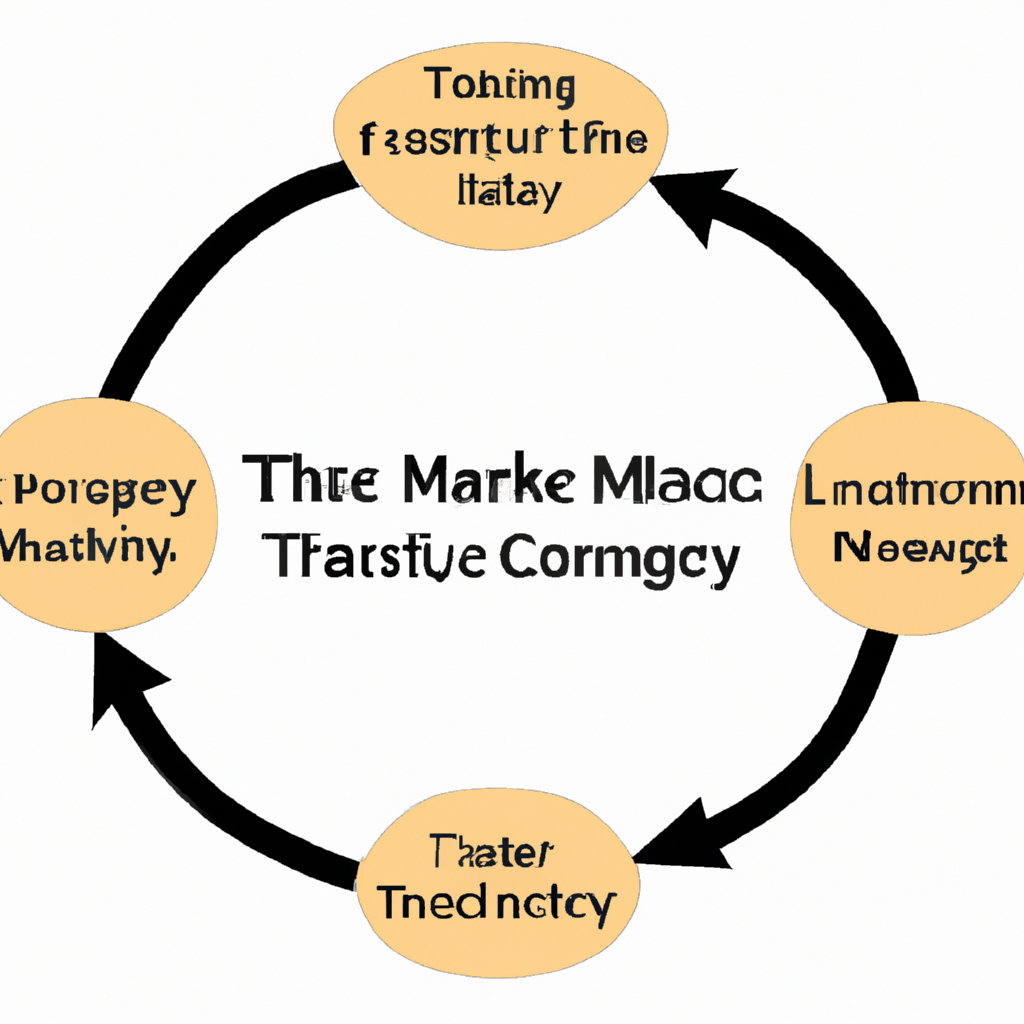
Market Cycle Theories: Understanding the Ups and Downs of the Financial Markets
Introduction
The financial markets are known for their inherent volatility, with prices constantly fluctuating up and down. Understanding these market cycles is crucial for investors and traders to make informed decisions and maximize their returns. Market cycle theories provide valuable insights into the patterns and phases that occur in the markets. In this article, we will explore some popular market cycle theories and their significance.
1. The Four Phases of a Market Cycle
1.1 Accumulation Phase
The market cycle typically begins with the accumulation phase, where smart money investors start buying assets at low prices. This phase occurs after a prolonged downtrend when the majority of investors are pessimistic about the market’s future. During this phase, prices remain relatively stable, and trading volumes are low. It is an opportune time for long-term investors to accumulate assets before the next phase unfolds.
1.2 Markup Phase
The markup phase follows the accumulation phase and is characterized by a gradual increase in prices. As more investors recognize the value and potential of the assets, buying pressure increases, leading to a sustained upward trend. This phase is often accompanied by positive news, improving economic indicators, and growing optimism among market participants. Traders and short-term investors aim to capitalize on the upward momentum during this phase.
1.3 Distribution Phase
The distribution phase marks the peak of the market cycle, where prices reach their highest levels. During this phase, the smart money investors who accumulated assets during the accumulation phase start selling their holdings to realize profits. The overall sentiment remains bullish, but signs of exhaustion and overvaluation start to emerge. It is a critical phase where investors need to exercise caution and consider taking profits or implementing risk management strategies.
1.4 Markdown Phase
The markdown phase is the final stage of the market cycle, characterized by a decline in prices. As selling pressure intensifies, the market experiences a correction or a full-blown bearish trend. Pessimism prevails, and investors who failed to exit their positions during the distribution phase may face significant losses. However, this phase also presents opportunities for value investors to identify undervalued assets and prepare for the next accumulation phase.
2. Elliot Wave Theory
2.1 Basics of the Elliot Wave Theory
The Elliot Wave Theory, developed by Ralph Nelson Elliot in the 1930s, suggests that markets move in repetitive patterns, known as waves. According to this theory, a complete market cycle consists of five waves in the direction of the primary trend, followed by three corrective waves. These waves are labeled as impulse waves and corrective waves, respectively.
2.2 Implications for Investors
Understanding the Elliot Wave Theory can help investors identify potential entry and exit points in the market. By recognizing the current wave within the larger market cycle, investors can anticipate trend reversals and position themselves accordingly. However, it is important to note that the Elliot Wave Theory is subjective and requires careful analysis to avoid false signals.
3. Kondratiev Wave Theory
3.1 Overview of Kondratiev Wave Theory
The Kondratiev Wave Theory, named after the Russian economist Nikolai Kondratiev, proposes that long-term economic cycles occur in various sectors of the economy. These cycles, often referred to as “K-waves,” typically span several decades and consist of alternating periods of growth and decline. Kondratiev identified four primary waves: spring, summer, autumn, and winter.
3.2 Practical Applications
The Kondratiev Wave Theory provides a macroeconomic perspective on market cycles. By understanding the long-term trends and cycles, investors can align their investment strategies accordingly. For example, during the winter phase characterized by economic downturns, investors may consider defensive assets or strategies to protect their portfolios. Conversely, during the spring and summer phases, investors may seek growth-oriented investments.
Conclusion
Market cycle theories offer valuable frameworks for understanding the dynamics of financial markets. By recognizing the distinct phases of a market cycle and utilizing theories such as the Elliot Wave Theory and Kondratiev Wave Theory, investors can make more informed decisions and navigate the ups and downs of the markets. However, it is important to remember that market cycles are not perfectly predictable, and combining these theories with thorough analysis and risk management is crucial for successful investing.





